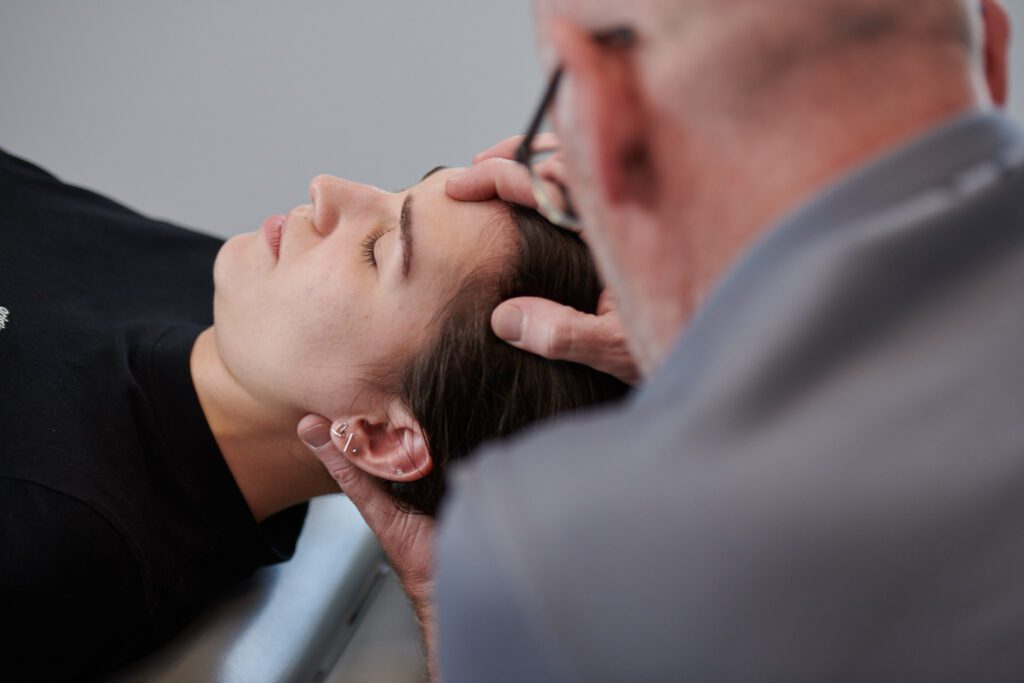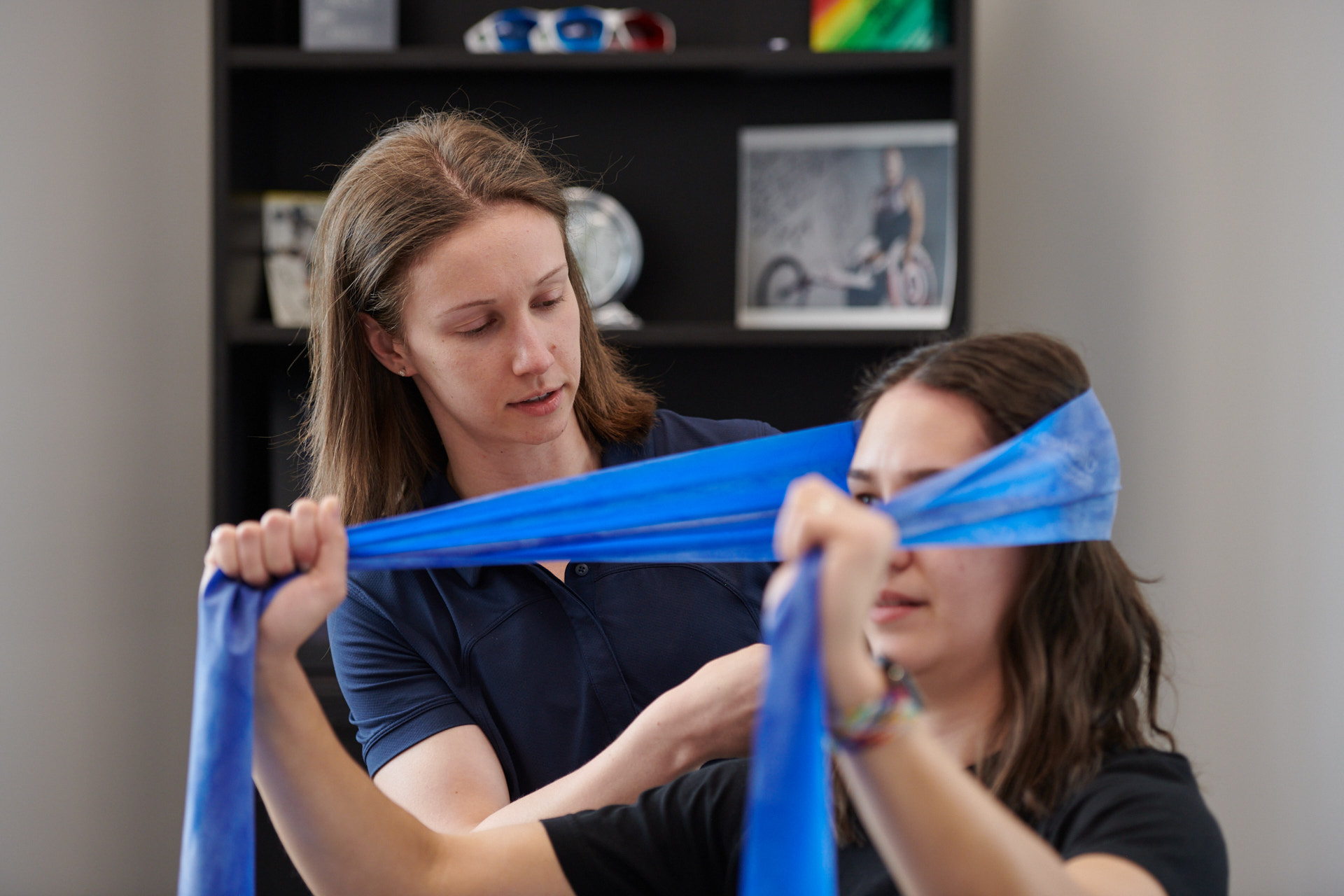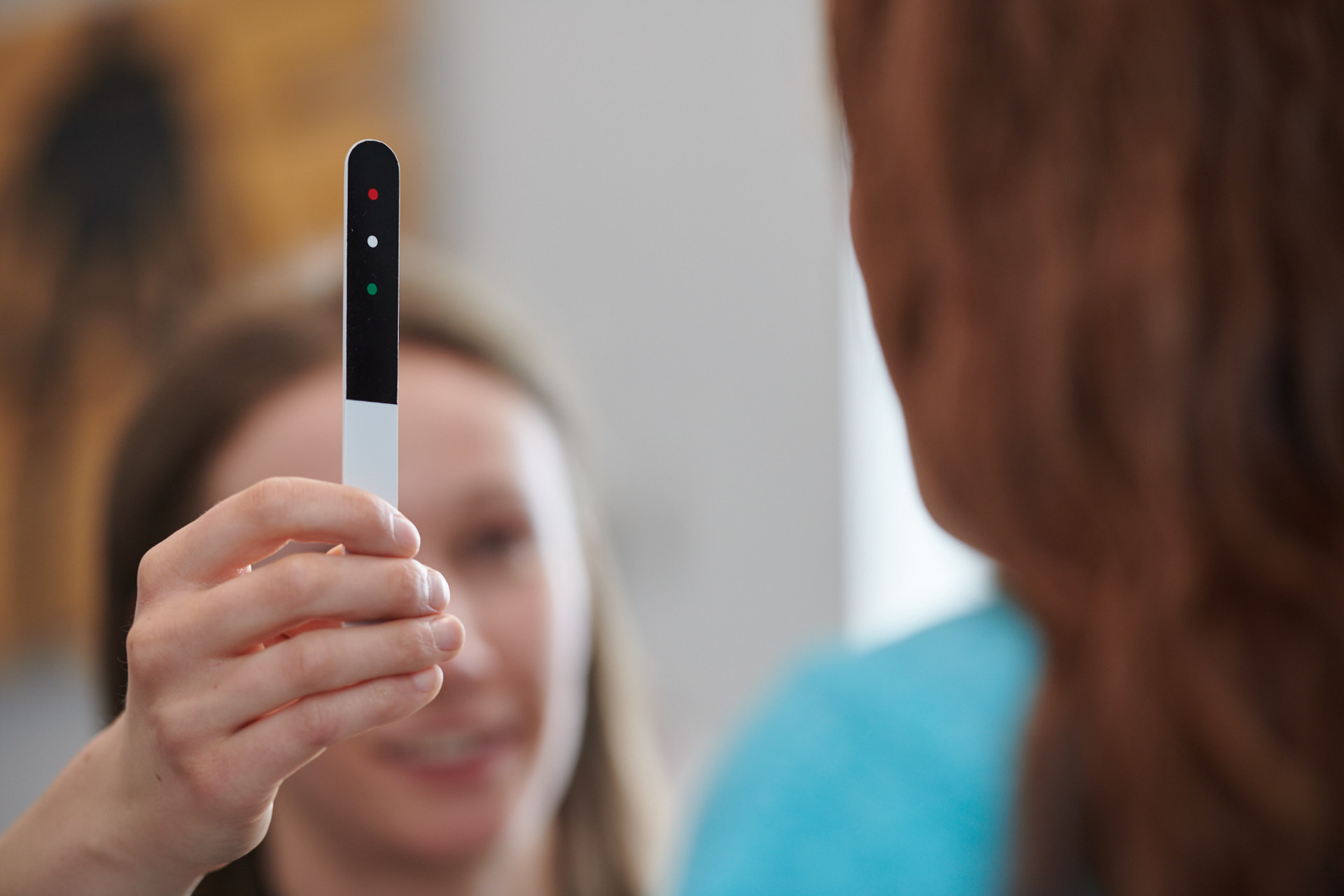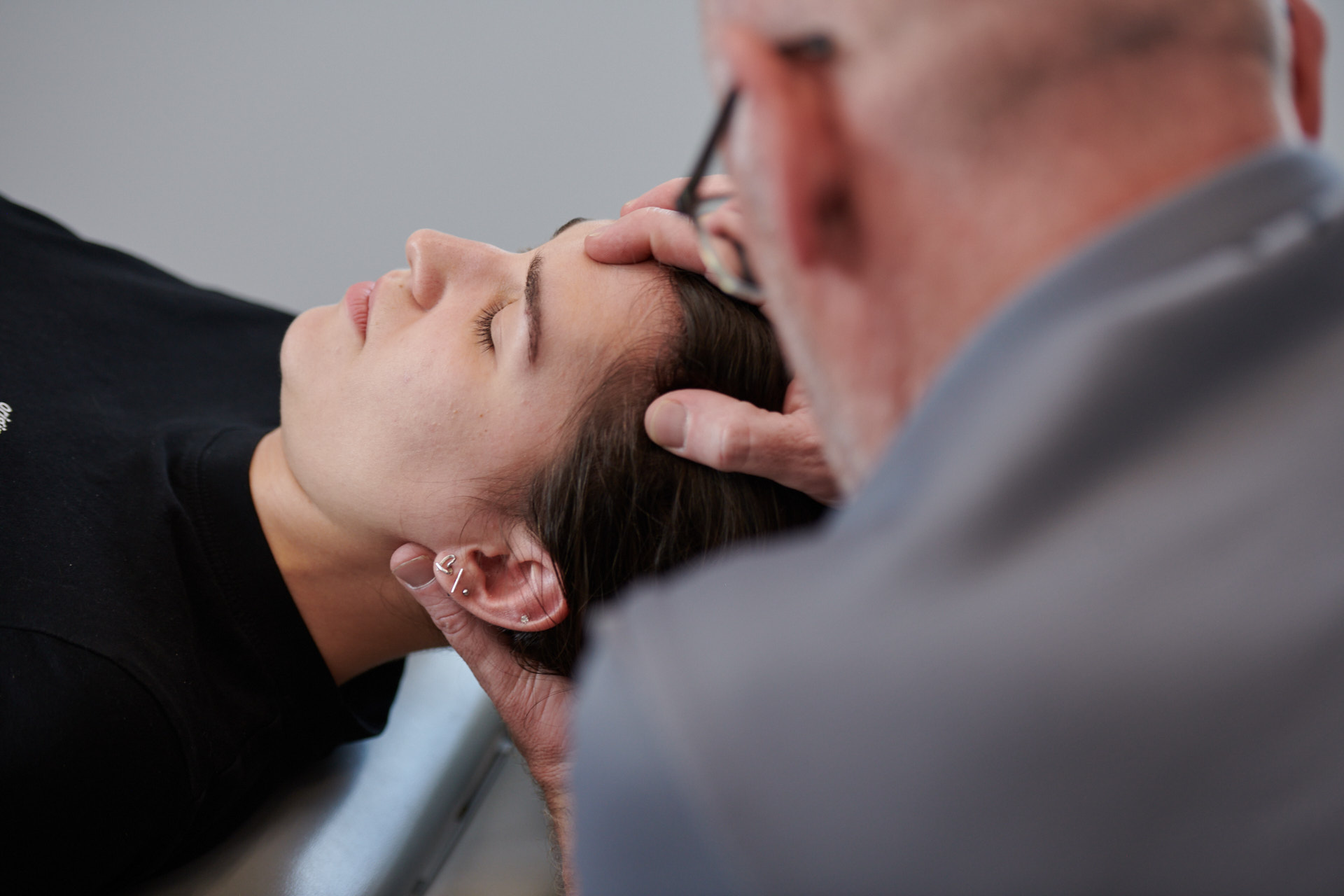Experiencing blurry vision, dizziness, or difficulty focusing after a head injury? You’re not alone. Vision problems are a common yet often underestimated consequence of concussions. These issues can stem from disruptions in how your brain processes visual information, impacting everything from your balance and coordination to your ability to think clearly. This article explores the critical connection between vision and concussion recovery, offering practical insights and actionable strategies to help you regain visual clarity and stability. We’ll delve into the science behind these problems, discussing the role of eye coordination, neck proprioception, and the importance of seeking professional help. Whether you’re an athlete, a parent, or anyone recovering from a concussion, understanding the link between vision and recovery is the first step toward a clearer, more balanced future.
Key Takeaways
- Vision and neck problems are often linked after a concussion. Dizziness, difficulty focusing, and even headaches can stem from how your brain processes visual information after a head injury. Addressing both vision and neck issues is key to a full recovery.
- Concussion Rehabilitation provides a personalized approach to concussion recovery. Healthcare Providers trained in Concussion Rehabilitation Methods can assess your specific challenges, including vision, neck problems, and cognitive difficulties, to create a tailored treatment plan. This holistic approach helps you regain independence and return to your normal routine.
- Specific exercises can improve vision and neck function after a concussion. Eye tracking, focus flexibility exercises, and neck proprioception training can help retrain your brain and improve coordination. These exercises, combined with professional guidance, are essential for regaining visual clarity and stability.
What is the Link Between Vision and Concussion Recovery?
After a concussion, you might experience unexpected symptoms, like dizziness, difficulty focusing, and even neck pain. Surprisingly, these issues often stem from problems with your vision and eye coordination. A concussion can disrupt how your brain processes visual information, creating a domino effect that impacts your daily life. Think of your eyes as messengers constantly sending information to your brain about your surroundings. A concussion can scramble these messages, making it hard for your brain to understand what your eyes see. This can lead to difficulty focusing, blurred vision, and problems with balance and coordination.
Even seemingly unrelated symptoms like headaches and brain fog can be tied to these visual processing issues. If your brain is working overtime to make sense of conflicting visual signals, it can lead to mental fatigue and cognitive difficulties. Understanding this connection is key to effective concussion management and a smoother recovery. Concussion Hub offers resources like our audio guide on concussion recovery to help you understand the complexities of this injury. We also have articles addressing specific issues, such as memory problems after head injury, to provide practical advice and support. For immediate steps to take after a concussion, check out our guide on early strategies.
How Eye Coordination Affects Brain Fog
Research shows eye coordination plays a vital role in cognitive clarity and how well our brains function. When our eyes don’t work together smoothly, it can strain the brain, potentially leading to brain fog. This is especially relevant during concussion recovery, as vision problems are a common symptom.
How Changes in Visual Processing Affects Brain Function
Concussion can hinder your brain’s ability to process what you see. Each eye sees an object from a slightly different perspective. Typically, our brain seamlessly merges these two images into a single, clear picture. But if your eyes aren’t working well together, this merging process gets disrupted, resulting in a fragmented view of the world. This can increase feelings of confusion and mental fatigue, contributing to brain fog. This often occurs alongside neck problems; as neck injury commonly accompanies concussion and can further exacerbate challenges with visual function, cognitive “fog” and balance.
Recognize Signs of Eye Coordination Issues
Recognizing signs of eye coordination problems is crucial for addressing brain fog. Signs of this might include intermittent double vision, blurred vision, trouble focusing, or feeling like your eyes are straining, especially when reading or looking at something up close. You might also get headaches, feel dizzy, lose your place when reading, or have difficulty comprehending what you’re reading. If you’re experiencing these symptoms, it’s a good idea to see a healthcare professional who can check your vision and help with treatments to improve how your eyes work together.
The Eye-Neck Connection in Concussion Recovery
This section explores the often-overlooked relationship between eye and neck problems after a concussion. Understanding this connection is crucial for effective recovery.
How Eye and Neck Problems Connect
After a head injury, you might experience vision problems like double vision or difficulty focusing. This happens because a concussion can disrupt how your eyes work together. Normally, each eye sees an object from a slightly different angle, and your brain seamlessly merges these images. A concussion can interfere with this process, causing images to split, as if you’re seeing double.
Additionally, cervical injury such as whiplash can further impact your proprioception. Neck proprioception refers to the ability of your neck muscles and joints to sense their position and movement, helping your body stay balanced and your eyes stay focused as you move. After a concussion, this system can be disrupted, leading to poor communication between your neck and brain. This can cause problems with eye movement, coordination, and visual focus because your brain relies on accurate signals from your neck to guide your eyes and maintain stability. This is why people with concussions often feel dizzy or have trouble focusing their vision, especially during activities like reading or moving their head quickly
How Eye-Neck Issues Impact Brain Function
The interplay of eye and neck problems can significantly impact brain function after concussion. When your eyes aren’t working efficiently, your brain works harder to process visual information. This increased strain can worsen brain fog, characterized by difficulty concentrating, remembering, and feeling mentally “hazy.”
Research supports the connection between eye-neck coordination and brain function. Studies show that exercises focusing on eye-head coordination can improve pain and joint position sense (proprioception) in individuals with neck pain (1). Other research highlights “eye-cervical re-education programs,” incorporating eye-neck coordination exercises to address chronic neck pain (2). These findings suggest that addressing eye and neck issues together can be vital for concussion recovery, potentially alleviating brain fog and improving overall cognitive function. For further guidance, consider our audio guide on navigating concussion recovery.
Why Concussion Rehabilitation Matters
After a concussion, you might experience a range of symptoms that impact your daily life, from difficulty concentrating to trouble with balance. Concussion Rehabilitation plays a crucial role in helping you regain independence and return to your normal routine. It offers a unique, holistic approach that addresses the multifaceted challenges a concussion can present.
Holistic Assessment Techniques
Rehabilitation Providers trained in concussion management (such as Physiotherapists, Occupational Therapists) take a comprehensive approach to assessing your condition. Like detectives, they piece together the puzzle of your specific challenges. They use a variety of assessment tools to screen and evaluate not only for deficits in visual function, cervical proprioception, vestibular performance, but also the cognitive and emotional factors that often accompany a concussion and can affect your recovery. Occupational Therapists in particular might use specific tests to evaluate your memory, attention, and problem-solving skills, as well as your ability to manage stress and anxiety. Concussion rehabilitation oftentimes requires a multidisciplinary approach, with several health professionals contributing to your care plan.
Personalized Treatment Plans
Because every concussion is unique, healthcare providers develop individualized treatment plans tailored to your specific needs and goals. Whether you’re struggling with memory problems, difficulty returning to work, or challenges with daily tasks, your care provider will create a program designed to address those specific issues. These personalized recovery programs may incorporate exercises to improve neck and visual performance, strategies to manage sensory overload, and techniques to adapt your environment to support your recovery. They empower you to take an active role in your healing.
Neuro-Optometry and Concussion
A Neuro-Optometry assessment can be very helpful if you’re having vision problems after a concussion. Optometrists with specialized training can look at how your brain and eyes are working together, identifying issues like trouble focusing, eye movement problems, or sensitivity to light. They can then provide treatments like special exercises, lenses, or prisms to help retrain your vision. This care works well alongside other rehabilitation methods, such as physical therapy for balance or neck issues, to address all aspects of your recovery and help you return to daily activities more comfortably.
Key Exercises to Improve Eye Coordination After a Concussion
Vision problems—like blurry or double vision, and difficulty focusing—are common after a concussion. These symptoms can make everyday tasks a struggle. Thankfully, targeted exercises can often improve eye coordination and offer relief. These exercises are a key part of visual rehabilitation, helping your eyes work together better.
Eye Tracking and Focus Flexibility
Eye tracking involves following a moving target with your eyes, keeping your head still. This strengthens the muscles that control eye movement, improving your ability to smoothly follow objects—important for everyday activities like reading and driving. Try using a small object like a pen, moving it horizontally, vertically, and diagonally. Focus flexibility exercises involve shifting your focus between near and far objects. This strengthens the muscles that control your eye’s lens, improving your ability to quickly adjust your focus. A simple exercise: hold your thumb close to your face and then focus on an object across the room, alternating back and forth. These exercises may need to be adapted for your specific case, so speak with your healthcare provider about what is right for you.
Peripheral Awareness Training
Peripheral awareness—your ability to see things outside your direct line of sight—can also be affected by a concussion. Exercises to improve this involve focusing on a central point while also paying attention to your peripheral vision. Try this: stand facing a wall and focus on a point straight ahead. While maintaining that focus, slowly bring your arms up to the sides and wiggle your fingers. Try to notice your fingers in your peripheral vision without directly looking at them. Peripheral awareness training is essential for regaining a full visual field, crucial for navigating your surroundings safely.
Gaze Stabilization Techniques
Gaze stabilization exercises improve the stability of your eyes, especially when your head is moving. These often involve moving your head while keeping your eyes fixed on a stationary target. For example, try shaking your head “yes” and “no” while keeping your gaze fixed on a point in front of you. Physiopedia explains how these techniques address sensorimotor deficits and can also reduce dizziness and neck pain, two common post-concussion symptoms.
Saccadic Eye Movements
Saccades are quick eye movements that shift your gaze from one point to another. Saccadic eye movement exercises involve quickly looking back and forth between two targets. Use two fingers or two small objects placed a short distance apart. These exercises, often called oculomotor exercises, improve control and coordination of eye movements, as discussed by Motion Specific Release, and are particularly helpful for tasks requiring precise visual attention.
How Neck Proprioception Affects Vision Recovery
After a concussion, you might experience dizziness, balance problems, and difficulty focusing. These issues often stem from disruptions in the connection between your eyes, inner ear, and neck. This intricate system helps you understand where your body is in space and how to move effectively. A key player in this system is proprioception.
What is Proprioception?
Proprioception is your body’s internal GPS. It’s the sense that tells you where your body parts are, relative to each other and the world around you, even with your eyes closed. You can touch your nose without looking, right? That’s proprioception. This sense relies on special receptors in your muscles, joints, and tendons that send information to your brain about joint position, muscle tension, and movement. A concussion can disrupt this communication pathway, leading to problems with balance, coordination, and vision. Neck pain, a common issue after concussion, further complicates this. Research shows that many individuals with neck pain also have impaired neck proprioception, making it difficult for their brains to accurately interpret head and neck position. This can impact how well your eyes work together and how clearly you see.
Exercises to Enhance Neck Stability and Eye-Neck Coordination
Improving neck proprioception is crucial for concussion recovery, especially for regaining visual clarity and stability. Specific exercises can help retrain the communication pathways between your neck and brain. These exercises often involve controlled head movements and eye tracking, challenging your brain to process information from your neck and eyes simultaneously. For example, slowly turn your head while keeping your eyes fixed on a target, or practice eye movements while holding your head in different positions. Studies show that these types of eye-neck coordination exercises can improve proprioception and reduce neck pain. Gaze stabilization exercises, where you maintain a steady gaze while your head or the environment moves, can further enhance your visual stability. Combining these exercises with traditional physical therapy can be highly effective in restoring proper eye-neck coordination and improving overall recovery. Explore Concussion Hub for more information on exercises and recovery strategies, including articles on memory problems and navigating concussion recovery.
Why Push Through Discomfort During Recovery?
Recovering from a concussion isn’t always easy. It can involve periods of discomfort, both physically and mentally. This can be frustrating, but understanding why discomfort is a normal part of the process can help you stay motivated.
Why Discomfort is Part of the Process
Think of concussion recovery like rebuilding a muscle after an injury. As one Redditor shared about their vision therapy, “The practice causes a pulling sensation in my eyes which is essentially like rebuilding a muscle. I have to lean into the discomfort for it to improve.” This perfectly illustrates the idea that growth and healing often involve some level of discomfort. Your brain is working hard to rewire and repair itself, and this process can manifest as physical sensations like headaches, eye strain, or dizziness. It’s important to remember that these sensations don’t necessarily mean you’re doing something wrong; they can be signs that your brain is actively engaged in the healing process. Similarly, emotional discomfort, such as frustration, anxiety, or sadness, is also common during concussion recovery. The American Psychological Association emphasizes the importance of managing these emotions, stating that “Understanding and managing the thoughts, emotions, and behaviors that accompany the discomfort can help you cope more effectively… and can actually reduce the intensity of your pain.” This highlights the interconnectedness of physical and emotional well-being during recovery. Addressing both aspects is crucial for a successful outcome. Learning to manage these feelings, rather than avoiding them, can be a powerful tool in your recovery journey.
Stay Motivated with These Strategies
So, how do you stay motivated when faced with discomfort? First, remember that effective coping strategies are essential. As Neurolaunch explains, “Coping strategies and healing techniques can help us navigate and overcome emotional pain.” Finding healthy ways to manage stress, such as mindfulness exercises, deep breathing, or spending time in nature, can make a significant difference in your overall well-being. Second, don’t hesitate to seek support. A personalized recovery program can provide the tools and resources you need to navigate the challenges of concussion recovery. Imagine Recovery points out that “Recovery professionals provide valuable tools and resources, such as therapy, medical care, peer support, and relapse prevention strategies.” Connecting with a therapist, support group, or other individuals who understand what you’re going through can provide invaluable encouragement and practical advice. Remember, you don’t have to go through this alone. By understanding the role of discomfort in recovery, developing coping mechanisms, and seeking support, you can equip yourself to navigate the challenges and celebrate the progress you make along the way. For more information on managing the emotional aspects of concussion recovery, explore Concussion Hub’s resources on emotional support and coping strategies. You can also find helpful information on early steps and strategies after a concussion.
Emotional Support and Coping Strategies in Concussion Recovery
Recovering from a concussion isn’t just about physical healing; it’s about addressing the emotional and psychological impact too. Anxiety, irritability, and feelings of isolation are common experiences. Prioritizing your emotional well-being is just as important as treating the physical symptoms.
Build a Strong Support Network
A concussion can disrupt your life, leaving you feeling vulnerable and lost. A strong support network can make all the difference. Talking with friends, family, or support groups creates a safe space to share your experiences and reduces feelings of isolation. Openly discussing your challenges helps process difficult emotions and reminds you that you’re not alone. Sometimes, simply having someone who understands can be incredibly helpful. Consider joining online or in-person support groups specifically for individuals recovering from concussions. These communities offer shared experiences and practical advice. Don’t hesitate to reach out to mental health professionals for personalized guidance and support. Concussion Hub offers additional resources and personal stories to help you feel connected.
Mindfulness and Relaxation Techniques
Stress and anxiety often accompany concussion recovery. Mindfulness and relaxation techniques can help manage these challenges and improve your emotional well-being. Practices like deep breathing, meditation, and yoga can calm your nervous system and reduce feelings of overwhelm. Even a few minutes of daily practice can have a positive impact. Harvard Health discusses the benefits of these techniques for managing the mental and emotional aspects of physical setbacks. Explore different approaches to find what works best for you. Guided meditation apps or online yoga classes are great resources. Incorporating these practices into your routine can cultivate calm and improve your emotional resilience.
Set Realistic Goals
Concussion recovery isn’t a straight line; there will be ups and downs. Setting realistic goals helps manage expectations and maintain motivation. Break down your recovery into smaller, achievable steps. Instead of trying to return to all your pre-concussion activities immediately, prioritize a few key areas. Setting realistic goals lets you celebrate small victories and build momentum. Healing takes time, so be patient with yourself and adjust your goals as needed. Tracking your progress in a journal can help visualize your accomplishments and stay motivated. Setbacks are a normal part of the process. View them as opportunities to learn and adjust your approach. Focus on your progress and keep moving forward, one step at a time. Concussion Hub offers additional resources on navigating the early stages of concussion recovery.
Common Misconceptions About Concussion Recovery
Debunking Myths About Vision and Neck Issues
It’s easy to assume that vision problems after a concussion are solely due to the initial brain injury and will resolve on their own. However, research suggests a strong link between visual disturbances and neck injuries that often accompany concussions. These neck issues can significantly impact vision recovery and may require specific treatment. For example, whiplash from a car accident can affect the intricate connection between the neck and visual systems, leading to problems like blurred vision, double vision, or difficulty focusing. This connection is often overlooked, leading to frustration for those experiencing lingering visual symptoms. The Vision Therapy Center offers valuable resources on the relationship between concussions and vision. Similarly, the Journal of Head Trauma Rehabilitation highlights the interplay between neck pain and concussion symptoms, emphasizing that problems in one area can worsen problems in the other.
Another common misconception is that once initial symptoms subside, full recovery is achieved. While this can be true, many individuals experience lingering issues like neck pain and visual disturbances long after the initial injury. These persistent symptoms often signal a more complex recovery process and the need for ongoing care. Don’t hesitate to seek professional help if you’re experiencing these issues.
Understand the Complexity of Recovery
Concussion recovery isn’t a straightforward, linear process. It often involves a range of symptoms, including cognitive, emotional, and physical challenges, which can be further complicated by neck and visual problems. The Mayo Clinic provides a comprehensive overview of concussion symptoms and causes, emphasizing this complex interplay. For a deeper understanding of memory problems after a concussion, check out this article: Can’t Remember Yesterday? Decoding Memory Problems After a Concussion.
Several factors influence the recovery timeline, including pre-existing conditions, the severity of the injury, and the presence of neck or visual problems. The American Academy of Neurology acknowledges this complexity, highlighting the individualized nature of concussion recovery. Understanding that each person’s journey is unique is crucial for managing expectations and seeking appropriate support. A personal story on Concussion Hub, My Concussion Recovery: From a Devastating Fall to a Triumphant Return, offers a relatable perspective on the challenges and triumphs of this journey. Additionally, the Navigating Concussion Recovery audio guide provides valuable insights and support for anyone navigating this complex process.
When to Seek Help for Vision Issues After Concussion
Experiencing vision problems after a concussion can be disorienting and frustrating. Knowing when to seek professional help is key to a smoother recovery.
Recognize Persistent Symptoms
Vision disturbances are common after a concussion. These can range from blurry vision and light sensitivity to difficulty focusing and double vision. Many individuals also report a sense of “brain fog” or dissociation, feeling like they’re in a haze. This hazy feeling can be intensified by the struggle to process visual information. If your vision problems persist or worsen, it’s crucial to seek professional guidance.
Find the Right Rehabilitation Provider
Many different types of care providers can effectively deliver concussion rehabilitation techniques. Use the provider search function on Concussoin Hub to find someone near you, or speak with your Family Physician. Individuals suffering from persistent concussion symptoms often benefit from physical rehabilitation exercises (such as those delivered by specially trained Physiotherapists, Chiropractors or Athletic Therapists for example) as well as interventions delivered by an Occupational Therapist and/or Mental Health Counsellor. In some cases of persistent visual dysfunction, a Neuro-Optometrist evaluation can offer the best approach. For further guidance on navigating concussion recovery, consider this introductory audio guide. It offers practical advice and support for managing the various challenges that can arise during the recovery process. You can also read a personal story about concussion recovery, offering further insight and inspiration.
Related Articles
- Concussion Guide: Symptoms, Recovery, and Prevention – Concussion Hub
- What should I do after a concussion? – Concussion Hub
- Concussion Recovery: A Practical Guide to Healing – Concussion Hub
- What are the Best Options for Concussion Treatment? Rehabilitation Options for Persistent Symptoms – Concussion Hub
- Can I exercise after a Concussion? – Concussion Hub
Frequently Asked Questions
How can vision problems affect my concussion recovery?
Vision and eye coordination problems are surprisingly common after concussions. They can contribute to dizziness, difficulty concentrating, headaches, and even neck pain. A concussion can disrupt how your brain processes visual information, making it harder to understand what you see. This can lead to a cascade of symptoms that impact your daily life.
What’s the connection between my neck and vision after a concussion?
The eyes and neck are closely connected. A concussion can disrupt the communication between them. If your eyes aren’t working together properly, you might experience more neck pain and stiffness due to compensatory changes. Neck injury and altered proprioception can also impact visual performance, further complicating your brain’s ability to process information effectively.
What role does concussion rehabilitation play in vision recovery after a concussion?
Concussion Rehabilitation Providers such as Physiotherapists and Occupational Therapists can help you regain independence after an injury. They can assess your specific vision, neck and vestibular challenges and create a personalized treatment plan. In some cases a Neuro Optometrist may need to be consulted for a more in-depth vision evaluation. Your rehabilitation plan might include exercises to improve eye coordination, strategies to manage sensory overload, and techniques to adapt your environment to support your recovery.
What are some exercises I can do to improve my eye coordination?
There are several exercises that can help improve eye coordination after a concussion. Two important exercises include peripheral awareness training, which helps you see things outside your direct line of sight, and Gaze stabilization exercises, which improve eye stability while your head is moving. Specific neck exercises can also improve proprioception and eye movement control, allowing your eyes and brain to work together more effectively.
Why am I experiencing discomfort during recovery, and what can I do about it?
Discomfort, both physical and mental, is a common part of concussion recovery. Your brain is working hard to heal, and this process can be challenging. Finding healthy ways to manage stress, such as mindfulness exercises, deep breathing, or spending time in nature, can help. Building a strong support network and connecting with others who understand what you’re going through is also crucial. Remember, recovery isn’t always linear. Be patient with yourself, celebrate small victories, and don’t hesitate to seek professional support when needed.






